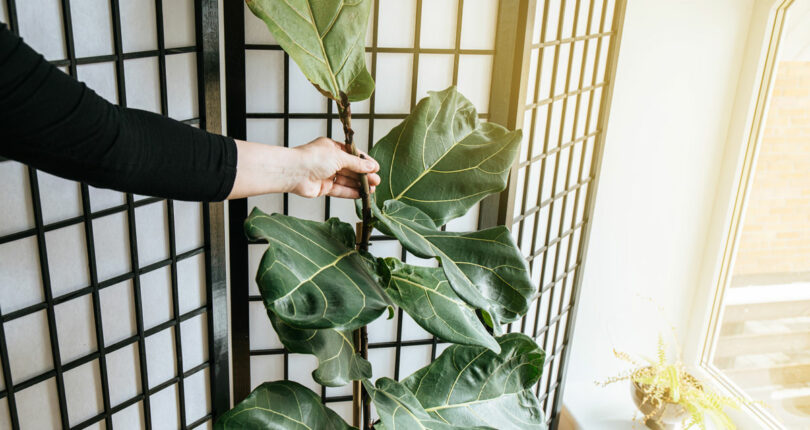Fickle? Fad? Simply fabulous.
Who would have thought a tropical rain forest tree could become so popular in Colorado’s semiarid climate? But indoor climate can be controlled, so Ficus lyrata, commonly known as fiddle-leaf fig, quickly became the hottest interior design trend.
In its native habitat of western Africa, the fiddle-leaf tree reaches a height of up to 50 feet. Indoors it typically reaches six to 10 feet, making it a design focal point. It features large heavily veined glossy leaves pointing upright on a slender trunk. Although leaf shapes vary, their narrow middle makes them resemble a fiddle.
Since fiddle-leaf figs thrive in warm, wet conditions, they can be challenging in Colorado homes. Fortunately, fig trees are fairly hearty and thrive when given the proper amount of sunlight and humidity and consistent temperatures. Light should be bright but filtered in late afternoon to avoid burnt leaves.
Fiddle-leaf figs prefer 60–85 degrees Fahrenheit with 30%–65% humidity. Lacking a humidifier, I mist leaves or add moisture by washing them occasionally with a warm, damp cloth. The clean leaves look brighter and aid photosynthesis. While misting, I remove dead or yellowing leaves, which are no longer needed.
Rotating plants once a week encourages even growth. A bushier appearance is achieved by pruning the top of the main stem. Cut back crossing branches to let the tree breathe better. When removing stems, try propagating them. Cut a 12-inch stem with a few leaves and pinch off all but one. Place the stem in a jar of water with filtered light and wait for roots to appear. Plant the cutting in potting soil when roots are one inch or longer.
Fiddle-leaf figs favor moderately moist soil. If they don’t get enough water, the leaves lose their bright green color and wilt. If they get too much water, the roots rot and the plant dies. It helps to plant them in pots with drainage holes. Since the plants are sensitive to high salt levels, you can place them in the sink and flush the soil until water drains out the bottom. Let the soil dry before the next watering.
Fiddle-leaf figs may grow two feet each year, so each spring you should replant in a container that is about two inches larger. When the plant is too large to repot, you can replace the top two inches of soil instead.
If you like the fiddle-leaf fig’s dramatic appearance, but have a small room, you can choose a smaller cultivar. Ficus lyrata ‘Compacta’ may reach five feet in height but has smaller, more compact leaves. Ficus lyrata ‘Bambino’ is a dwarf variety that only reaches a few feet tall.
Although not common, fiddle-leaf figs may be prone to getting spider mites, scale insects, and bacterial or fungal diseases. You can detect these issues by watching for leaf damage (such as spots or dark patches) and small bugs on the leaves. These issues won’t become serious if you treat them right away with an appropriate fungicide, pesticide, or other remedy.
By giving fiddle-leaf figs a little special attention, you will be able to enjoy them for years.
Master Gardener Vicki Spencer has an eclectic background in conservation, water, natural resources, and more.
Want more gardening tips? Click here to previous gardening columns.

